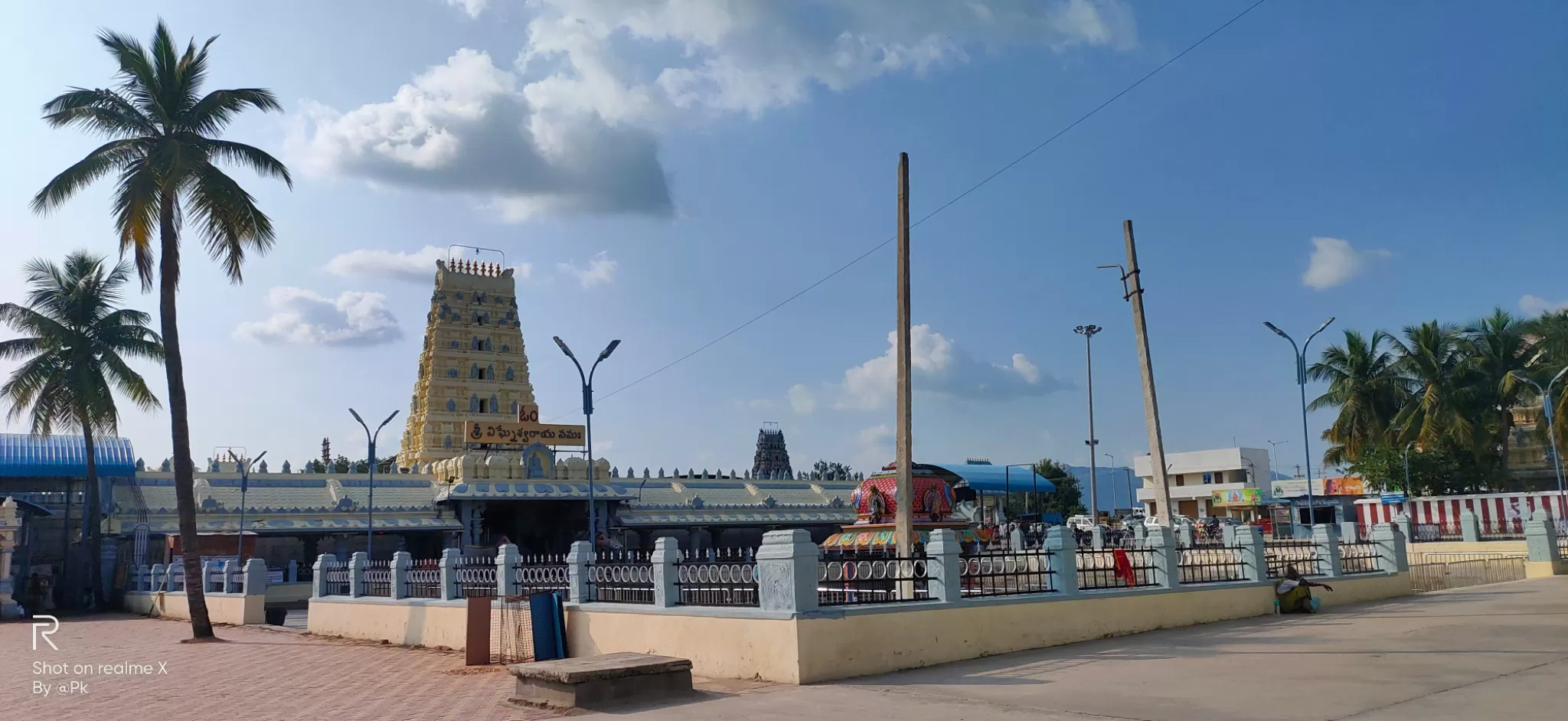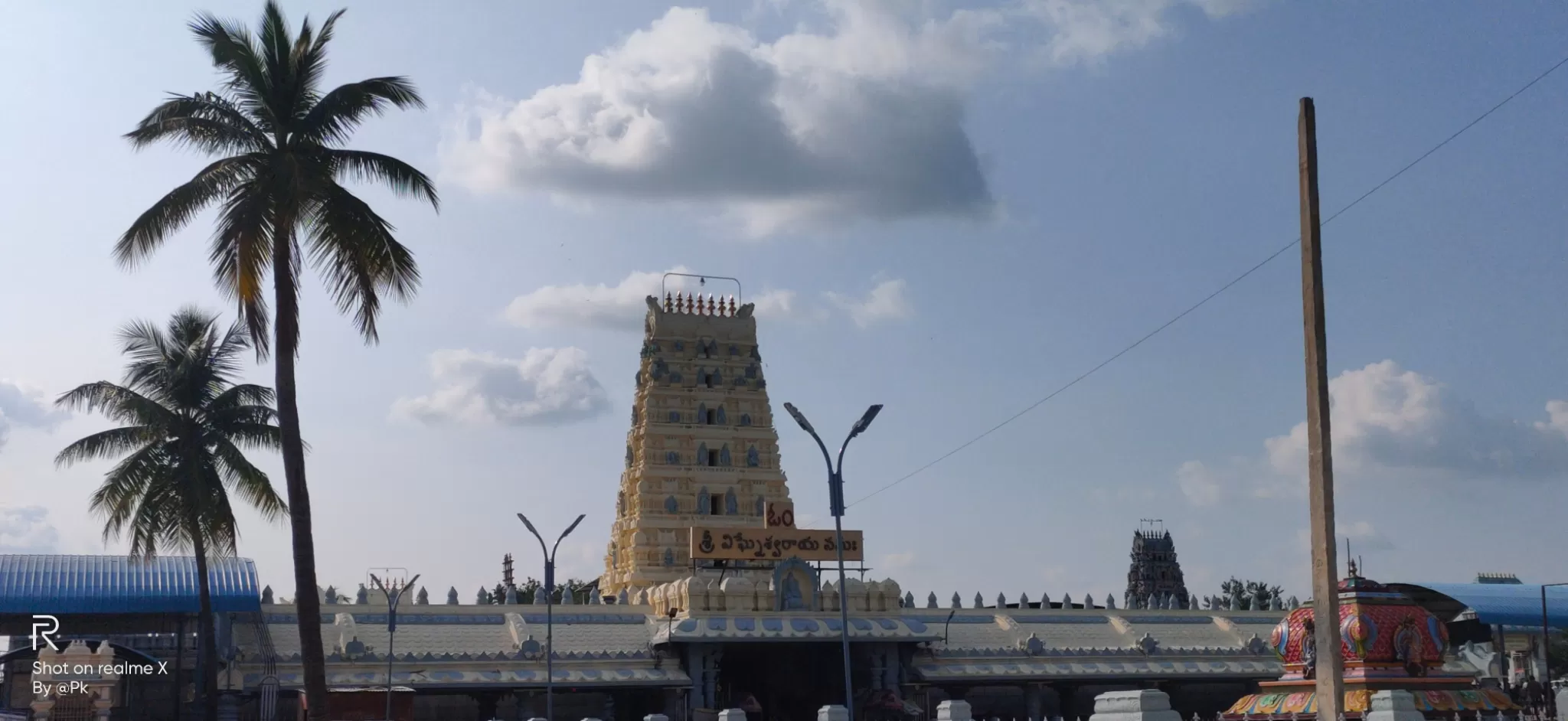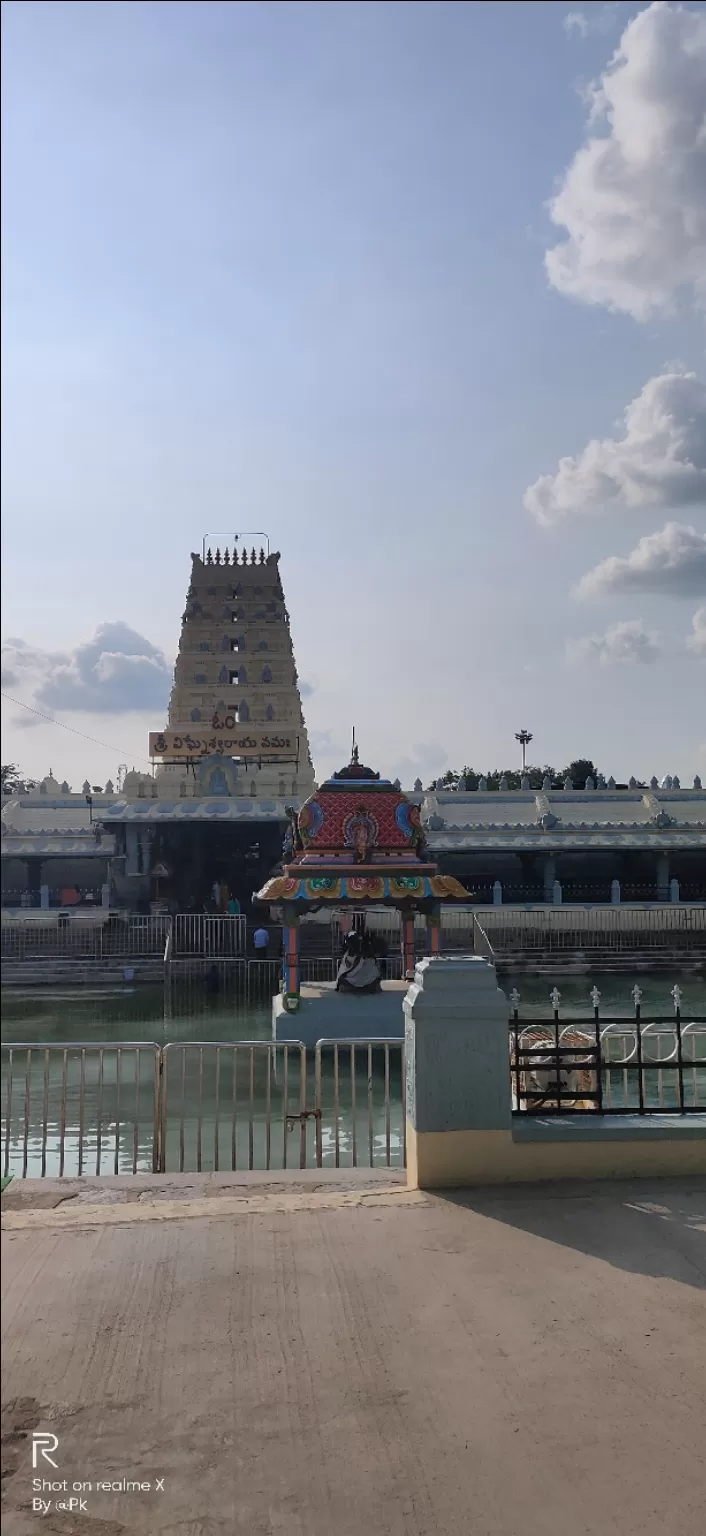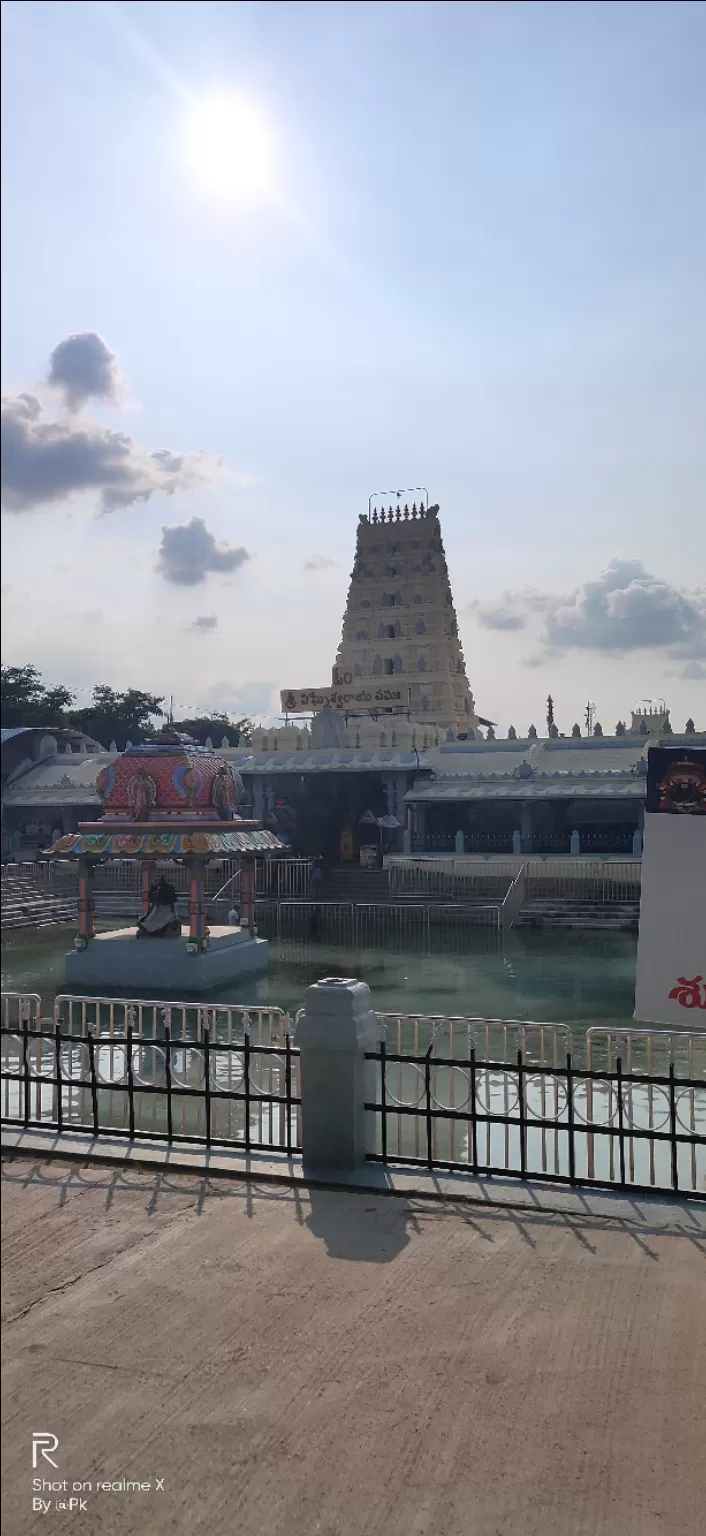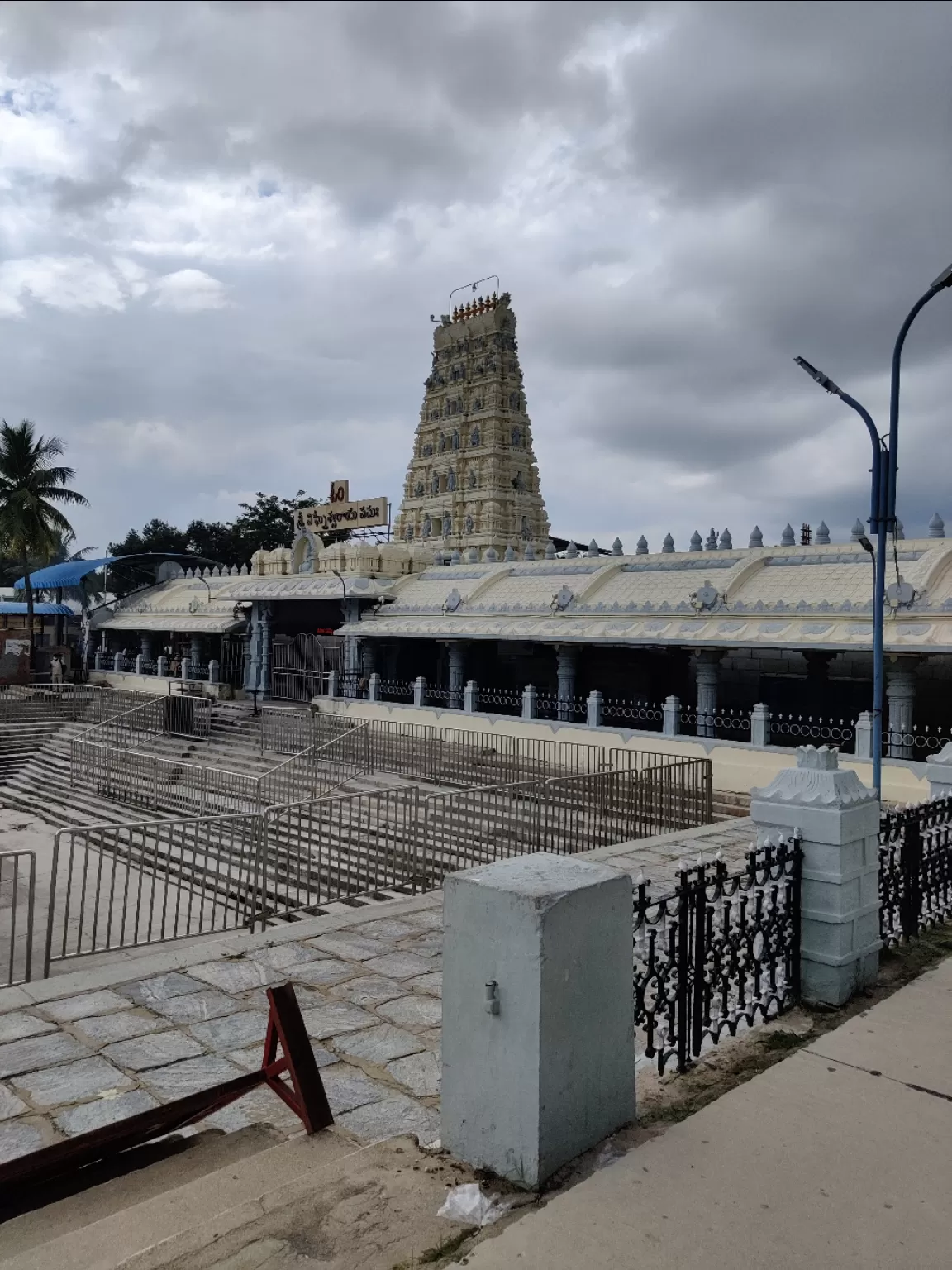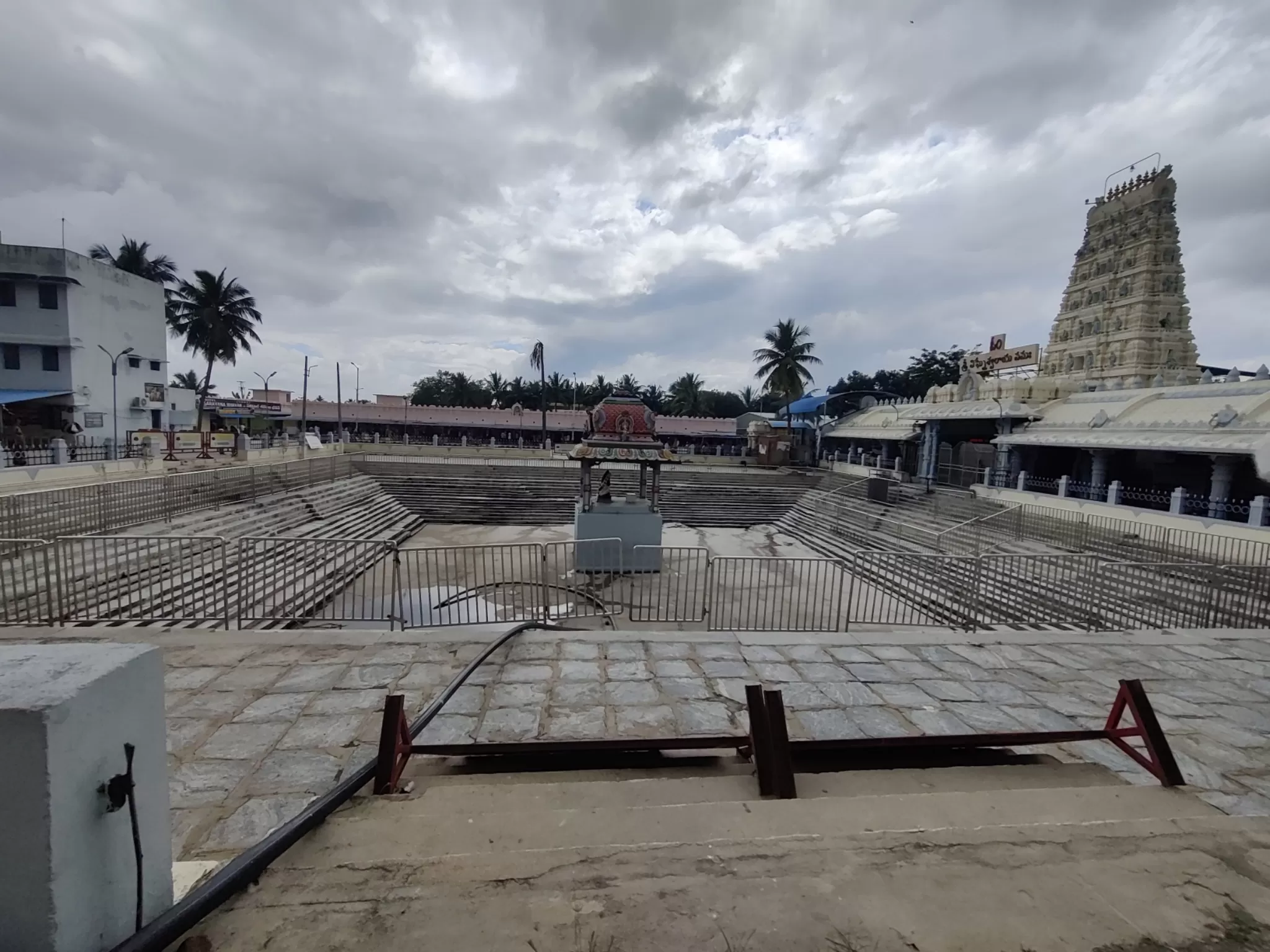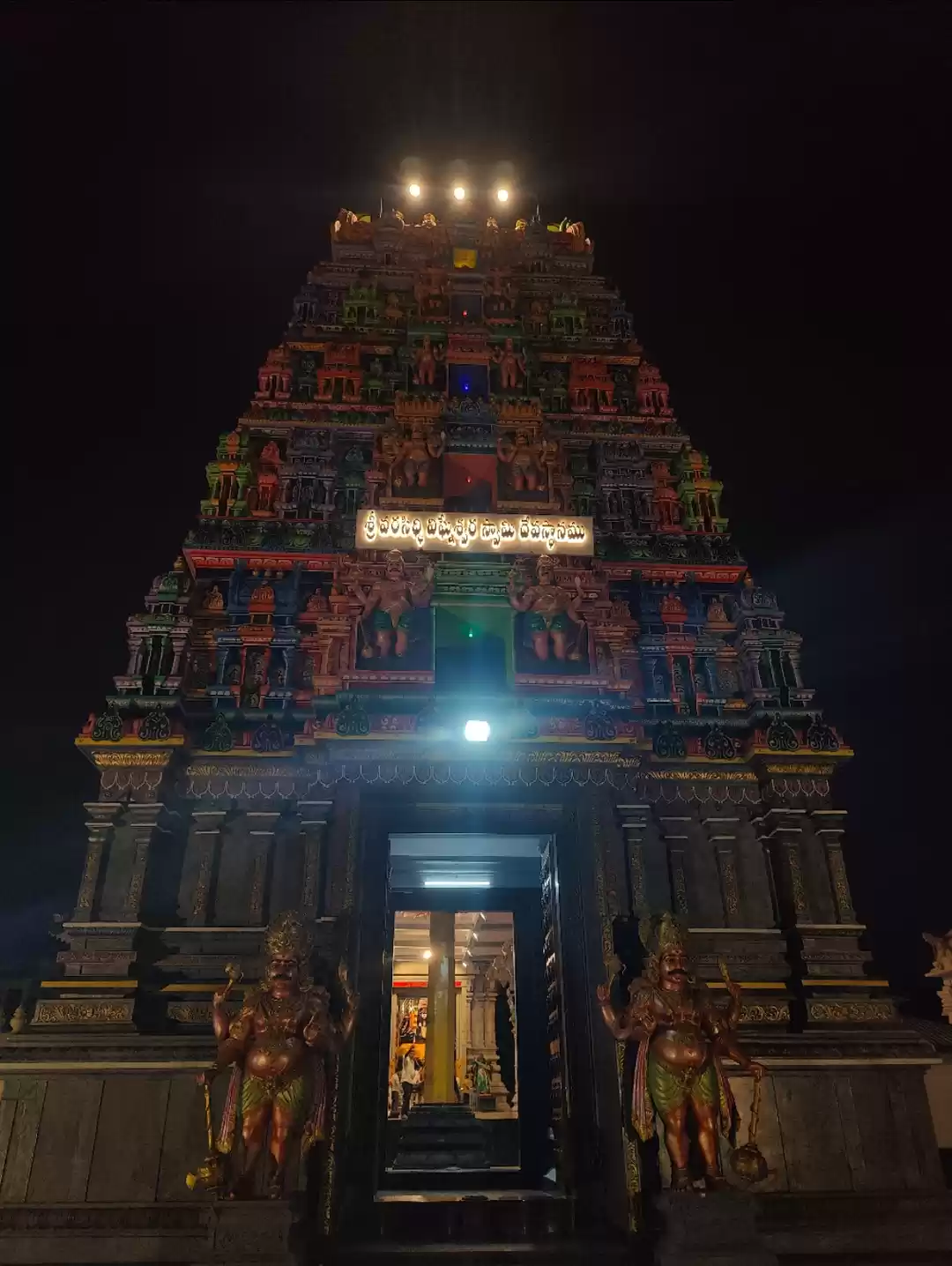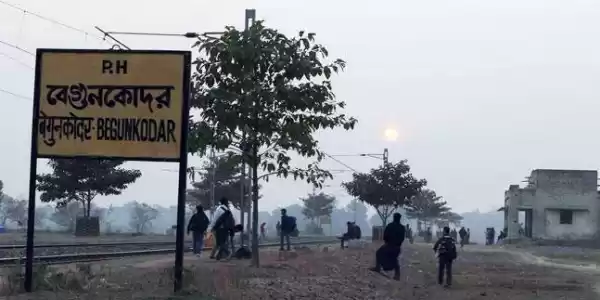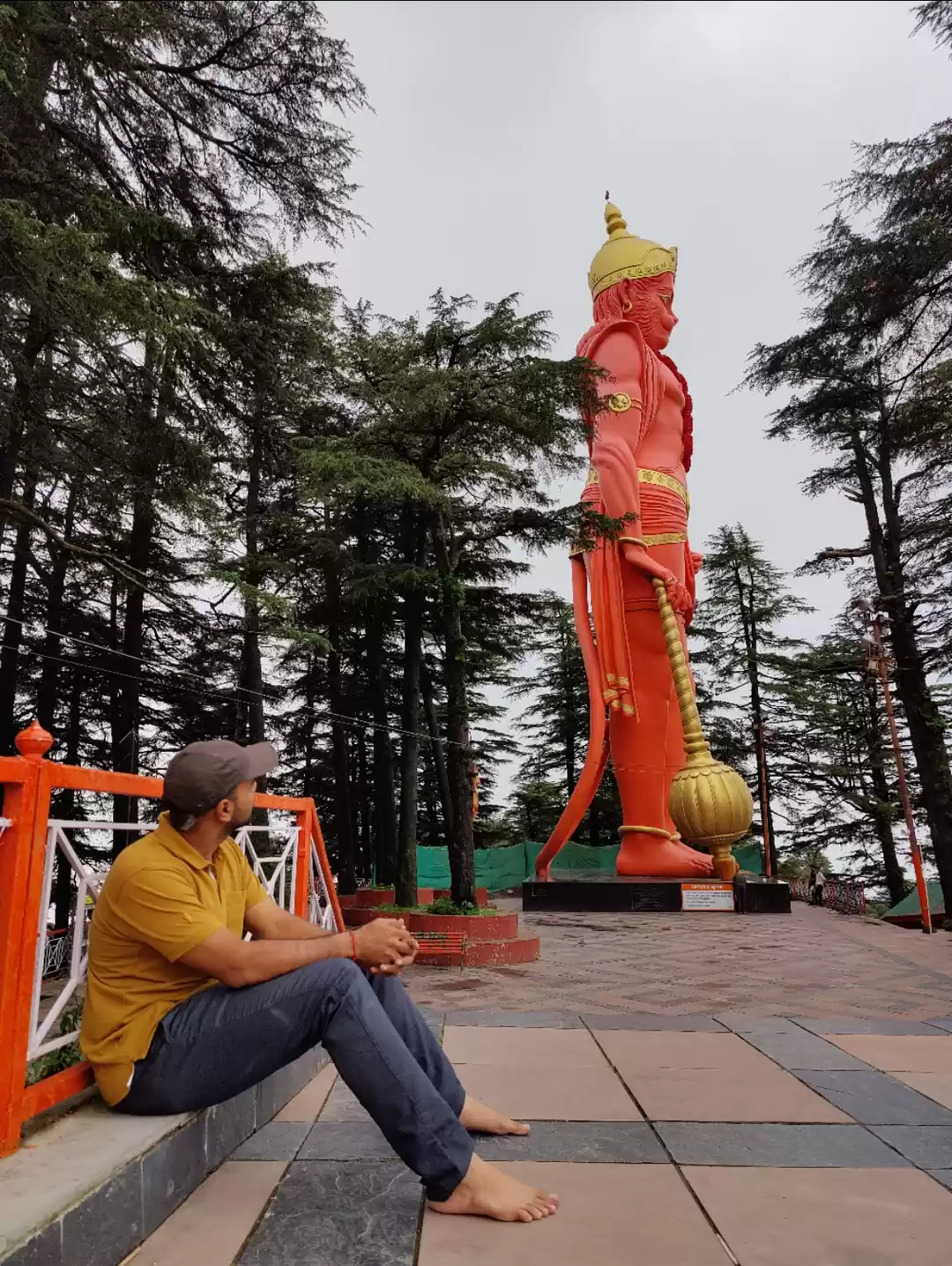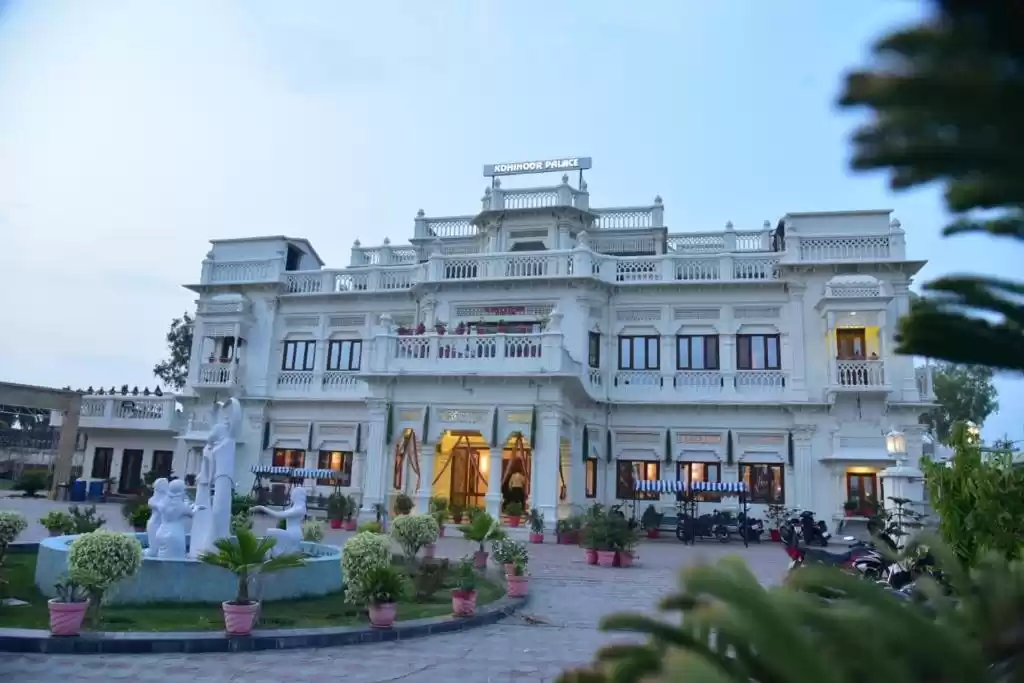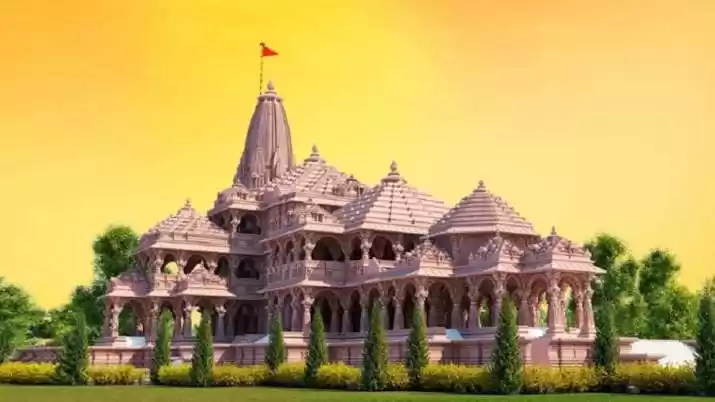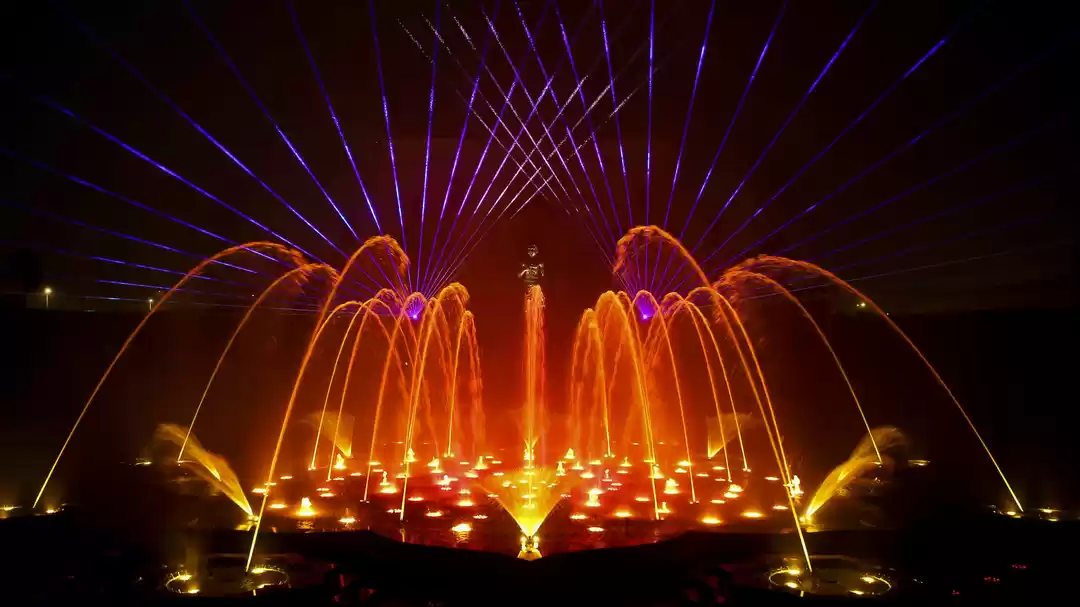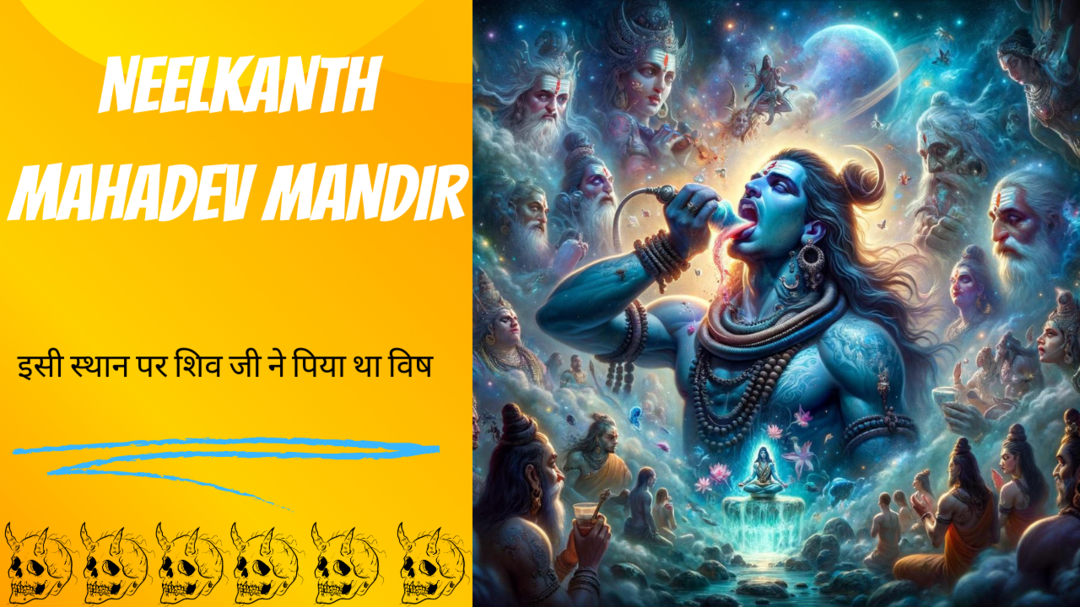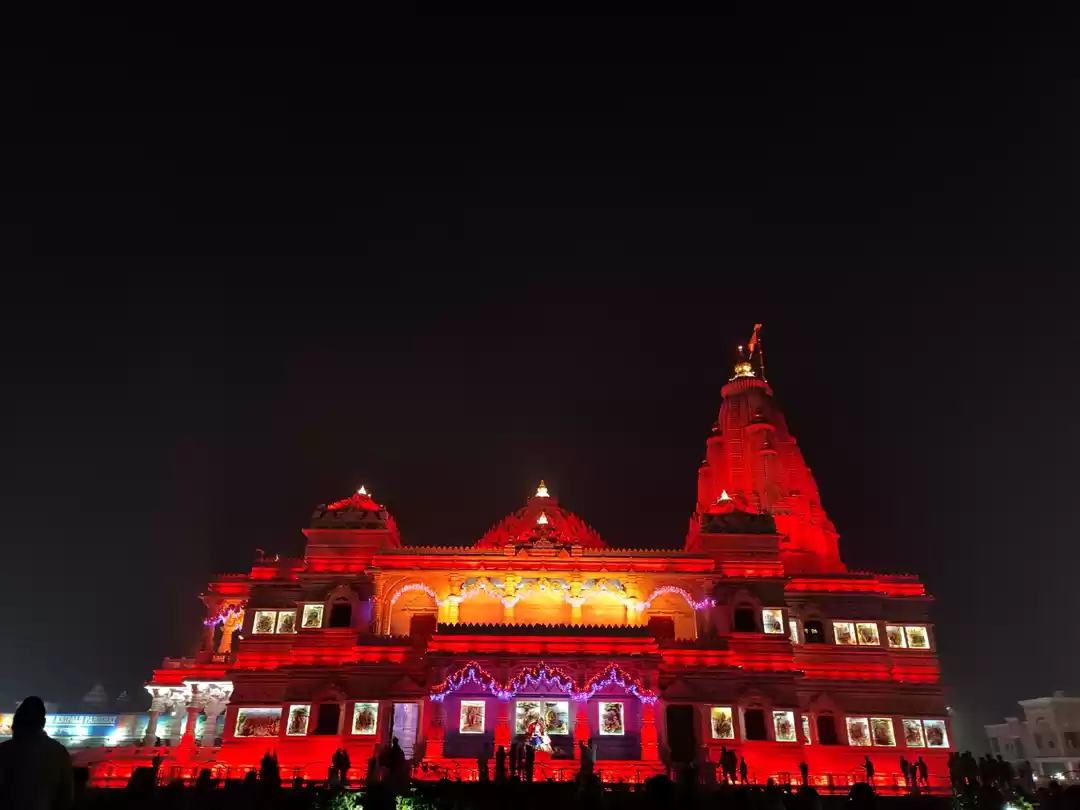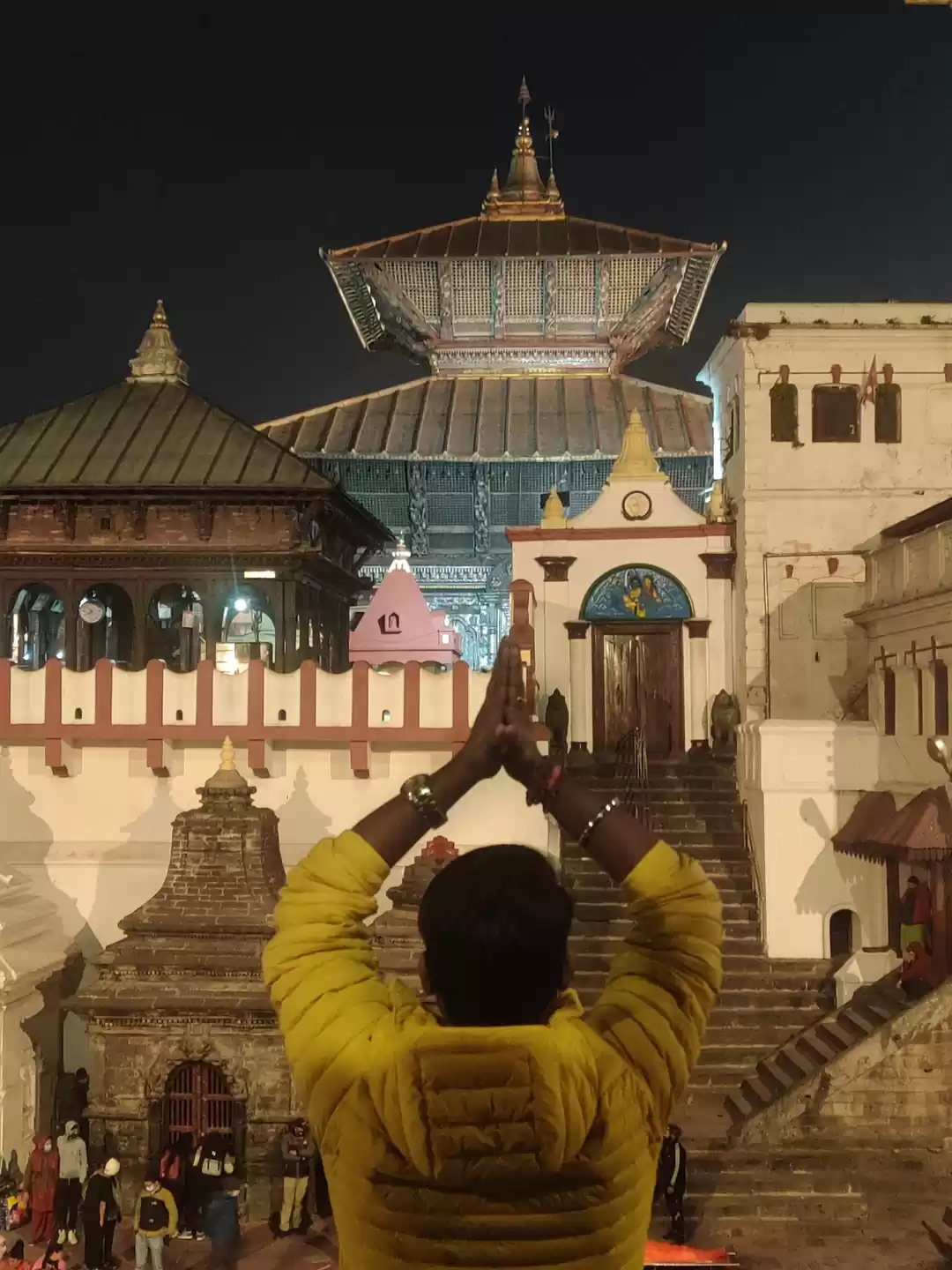Are you looking for a spiritual and cultural destination that will fill your heart with awe and devotion? If yes, then you should visit the Kanipakam Vinayaka Temple, one of the most famous and revered temples of Lord Ganesha in India. Located in the Chittoor district of Andhra Pradesh, this temple is known for its miraculous idol of Lord Ganesha that emerged from a well and grows in size over time. The temple also boasts of a rich history, a splendid architecture, and a vibrant festive atmosphere that attracts millions of pilgrims every year. In this article, we will tell you everything you need to know about the Kanipakam Vinayaka Temple, from its legend and history to its festivals and rituals, and from its timings and fees to its live darshan and online booking. Read on to discover why this temple is a must-visit for anyone who wants to experience the divine grace of Lord Ganesha.

The Legend of Kanipakam Vinayaka Temple
The name "Kanipakam" means "flowing water in a wetland" in Telugu, and it refers to the origin and the miracle of the temple. According to the legend, there were three brothers who were blind, deaf, and dumb, and they lived by farming a small piece of land. One day, they found that the water in their well had dried up, and they decided to dig deeper. To their surprise, they hit a stone formation that started bleeding. The blood filled the well with water, and the brothers regained their senses. They realized that they had struck the idol of Lord Ganesha, and they started worshipping it with devotion. Soon, the news of the miracle spread, and people from far and wide came to see and worship the idol. The idol is believed to be swayambhu, or self-manifested, and it is also known as Varasiddhi Vinayaka, or the bestower of boons.
The idol of Lord Ganesha at Kanipakam Vinayaka Temple is not only miraculous, but also mysterious. It is said that the idol grows in size over time, and the temple authorities have to change the ornaments and the armour periodically to fit the idol. The idol is also said to change the color of the water in the well according to the lunar phases, and the devotees can see the reflection of the moon on the water. The devotees also claim to have experienced divine visions and blessings after visiting the temple. Some of the miracles that have occurred at the temple are documented and displayed at the temple premises.
The History and Architecture of Kanipakam Vinayaka Temple
The Kanipakam Vinayaka Temple has a long and glorious history that dates back to the 11th century CE. The temple was originally built by the Chola king Kulothunga Chola I, and it was later expanded and renovated by the Vijayanagara kings, especially Krishnadevaraya, in the 16th century CE. The temple also witnessed the battles and the invasions of the Muslim rulers, such as Malik Kafur and Hyder Ali, and it was protected and preserved by the devotees and the local rulers.
The temple has a magnificent architecture that reflects the styles and the influences of the Chola and the Vijayanagara dynasties. The temple has a towering gopuram, or gateway, that is adorned with intricate carvings and sculptures of various gods and goddesses. The temple also has a spacious mandapam, or hall, that leads to the sanctum, or the inner chamber, where the idol of Lord Ganesha is installed. The sanctum has a silver-plated door and a golden vimana, or dome, that adds to the beauty and the grandeur of the temple. The temple also has a number of vahanas, or vehicles, that are used to carry the idol during the festivals and the processions. Some of the vahanas are made of wood, silver, and gold, and they depict different forms and aspects of Lord Ganesha.
The temple walls and pillars are decorated with inscriptions and sculptures that reveal the history and the significance of the temple. Some of the inscriptions are in Tamil, Telugu, and Kannada, and they mention the names and the deeds of the kings and the donors who contributed to the temple. Some of the sculptures depict the scenes and the stories from the Hindu epics and the puranas, such as the Ramayana, the Mahabharata, and the Ganesha Purana. The temple also has a gallery that displays the paintings and the photographs of the temple and its festivals.
The Festivals and Rituals of Kanipakam Vinayaka Temple
The Kanipakam Vinayaka Temple is a hub of religious and cultural activities, and it celebrates a number of festivals and rituals throughout the year. The most important and the grandest festival of the temple is the Brahmotsavam, or the annual festival, that lasts for 21 days in the months of August and September. During this festival, the idol of Lord Ganesha is taken out in a procession on different vahanas, and the devotees can witness the various alankarams, or decorations, of the idol. The festival also includes the abhishekam, or the bathing, of the idol with different liquids, such as milk, honey, coconut water, and sandal paste. The festival also offers the prasadam, or the sacred food, to the devotees, such as the modakam, the favorite sweet of Lord Ganesha.
Another important festival of the temple is the Ganesha Chaturthi, or the birthday of Lord Ganesha, that falls on the fourth day of the waxing moon in the month of August or September. On this day, the devotees perform the Ganapathi Homam, or the fire ritual, and the Ganapathi Pooja, or the worship, of the idol. They also offer the 21 varieties of leaves and the 21 varieties of fruits to the idol, and they chant the 108 names and the 1000 names of Lord Ganesha. The devotees also immerse the clay idols of Lord Ganesha in the water as a symbol of his departure and return.
Some of the other festivals and rituals that are celebrated at the temple are the Vinayaka Chavithi, the Sankatahara Chaturthi, the Maha Shivaratri, the Ugadi, the Rama Navami, the Hanuman Jayanti, the Narasimha Jayanti, the Krishna Janmashtami, the Navaratri, the Vijaya Dashami, the Deepavali, the Kartika Purnima, the Dhanurmasam, and the Makara Sankranti.
The temple also offers a variety of sevas and pujas to the devotees who wish to seek the blessings of Lord Ganesha. Some of the sevas and pujas are the Ashtottara Shatanamavali, the Sahasranamavali, the Kalyanotsavam, the Unjal Seva, the Pallaki Seva, the Vahana Seva, the Nijaroopa Darshan, the Nitya Kalyanam, the Suprabhata Seva, and the Ekantha Seva. The devotees can also perform the Archana, the Aarti, the Abhishekam, and the Pradakshina of the idol.
The Timings and Fees of Kanipakam Vinayaka Temple
The Kanipakam Vinayaka Temple is open for the devotees from 4:00 AM to 9:30 PM on all days of the week. The temple timings may vary during the festivals and the special occasions. The temple also has different timings for the different sevas and pujas, and the devotees can check the official website of the temple for the latest updates.
The temple charges a nominal entry fee of Rs. 10 per person for the general darshan, and Rs. 50 per person for the special darshan. The temple also charges different fees for the different sevas and pujas, ranging from Rs. 5 to Rs. 5000, depending on the type and the duration of the seva or the puja. The devotees can pay the fees in cash or through online mode.
The best time to visit the temple is during the Brahmotsavam festival, when the temple is decorated with lights and flowers, and the idol of Lord Ganesha is displayed in various forms and vahanas. The devotees can also visit the temple during the Ganesha Chaturthi festival, when the temple is filled with joy and devotion, and the idol of Lord Ganesha is offered with various sweets and fruits. The devotees can also visit the temple during the other festivals and rituals, or during the off-season, when the temple is less crowded and more peaceful.

The Live Darshan and Online Booking of Kanipakam Vinayaka Temple
The Kanipakam Vinayaka Temple offers a live darshan feature that allows the devotees to watch the temple rituals and events in real time through the internet. The devotees can access the live darshan feature by visiting the official website of the temple and clicking on the live darshan link. The live darshan feature is available from 6:00 AM to 9:00 PM on all days of the week. The live darshan feature also shows the timings and the schedule of the live darshan, and the devotees can plan their online darshan accordingly.
The Kanipakam Vinayaka Temple also offers an online booking feature that allows the devotees to book the sevas, pujas, accommodation, and donation online. The devotees can access the online booking feature by visiting the official website of the temple and clicking on the online booking link. The online booking feature is available 24/7 on all days of the year. The online booking feature also shows the availability and the rates of the sevas, pujas, accommodation, and donation, and the devotees can choose and pay for their desired service. The online booking feature also provides the terms and conditions of the online booking, and the devotees can read and agree to them before proceeding with the booking.
The How to Reach and Tips for Visiting Kanipakam Vinayaka Temple
The Kanipakam Vinayaka Temple is located in the village of Kanipakam, which is about 11 km from the town of Chittoor, and about 75 km from the city of Tirupati. The temple is well-connected by road, rail, and air, and the devotees can reach the temple by different modes of transport.
- By Road: The temple is easily accessible by road from Chittoor, Tirupati, Bangalore, Chennai, and other nearby cities and towns. The devotees can take the state or the private buses that ply regularly to Kanipakam, or they can hire a taxi or a car to reach the temple. The temple has a parking facility for the vehicles, and the devotees can park their vehicles at a nominal fee.
- By Rail: The nearest railway station to the temple is the Chittoor railway station, which is about 12 km from the temple. The Chittoor railway station is well-connected by trains from Tirupati, Bangalore, Chennai, and other major cities and towns. The devotees can take a bus, a taxi, or an auto-rickshaw from the railway station to reach the temple.
- By Air: The nearest airport to the temple is the Tirupati airport, which is about 80 km from the temple. The Tirupati airport is well-connected by flights from Hyderabad, Bangalore, Chennai, and other major cities and towns. The devotees can take a bus, a taxi, or a car from the airport to reach the temple.
Some of the tips and suggestions for visiting the temple are:
- Dress Code: The devotees should follow a decent and modest dress code while visiting the temple. The devotees should avoid wearing shorts, jeans, t-shirts, skirts, and other revealing or inappropriate clothes. The devotees should wear traditional or ethnic clothes, such as sarees, salwar kameez, kurta pyjama, dhoti, etc.
- Photography: The devotees are not allowed to take photographs or videos inside the temple premises, especially near the idol of Lord Ganesha. The devotees should respect the sanctity and the privacy of the temple and the devotees, and they should refrain from using any cameras or mobile phones inside the temple.
- Prasad: The devotees can buy or bring the prasad, or the offering, for the idol of Lord Ganesha, such as the modakam, the coconut, the fruits, the flowers, etc. The devotees can also receive the prasad from the temple after the darshan or the puja, such as the tirtham, the kumkum, the vibhuti, etc. The devotees should consume or distribute the prasad with reverence and gratitude, and they should not waste or discard it.
- Nearby Places: The devotees can also visit some of the nearby places that are of religious and historical importance, such as the Swayambu Varasiddhi Vinayakaswamy Temple, the Ardhagiri Anjaneya Swamy Temple, the Sri Kalahasti Temple, the Tirumala Tirupati Temple, the Horsley Hills, the Chandragiri Fort, the Nagalapuram Falls, etc. The devotees can also enjoy the scenic beauty and the natural surroundings of the Kanipakam village and the Chittoor district.
Conclusion
The Kanipakam Vinayaka Temple is a divine and delightful destination that will enrich your soul and your senses. The temple is a testimony to the power and the grace of Lord Ganesha, and it is a place where you can witness the miracles and the mysteries of the idol. The temple is also a treasure trove of history and culture, and it is a place where you can experience the festivals and the rituals of the temple. The temple is also a convenient and comfortable destination, and it is a place where you can avail the live darshan and the online booking of the temple. The temple is also a gateway to other attractions and adventures, and it is a place where you can explore the nearby places and the natural beauty of the region.
If you are looking for a spiritual and cultural getaway, then you should visit the Kanipakam Vinayaka Temple and experience the divine grace of Lord Ganesha.
We hope you enjoyed reading this article, and we hope you will visit the Kanipakam Vinayaka Temple soon. Thank you for your time and attention, and we invite you to visit the temple and experience its divine grace. Jai Ganesh!


